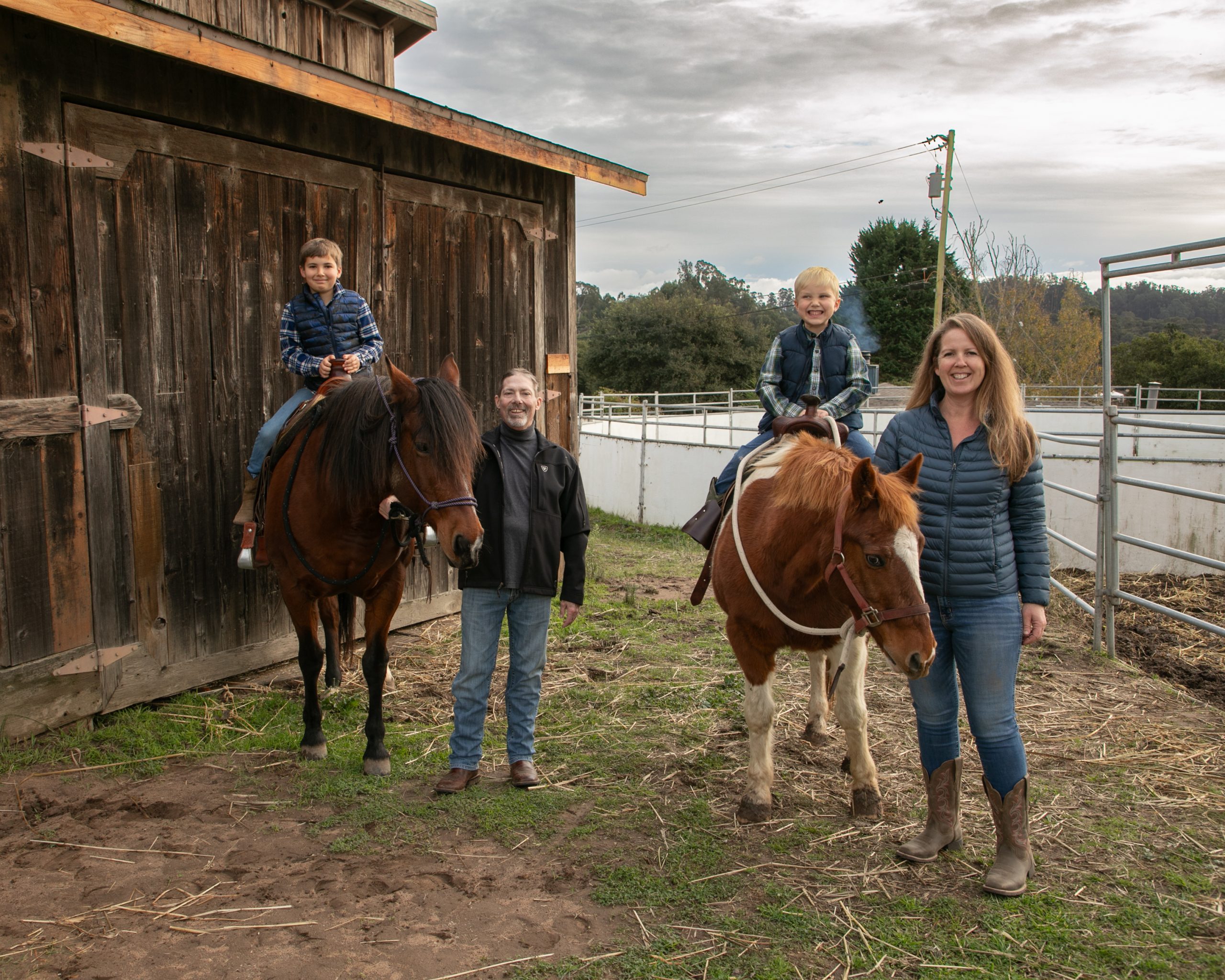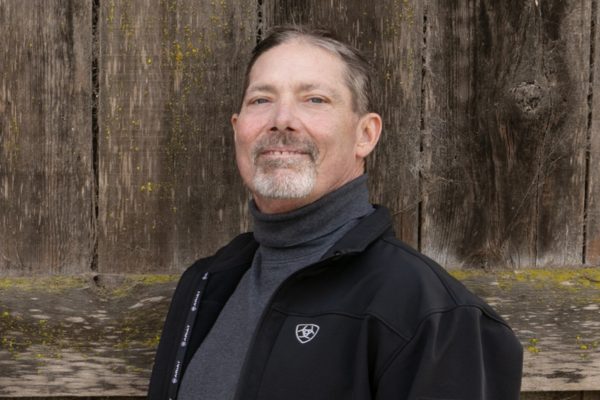AlphaNet REACH subscriber Thomas “Tom” Ghigliotto was diagnosed with Alpha-1 in 2010 and has since undergone two life-saving transplants, receiving a new liver in 2022 and new lungs in 2024. Now, this father of five is ready to tell his story and give back to the community that has supported him. Read on to learn more about Tom’s Alpha-1 diagnosis journey, his transplant experiences, and his plans for the future.
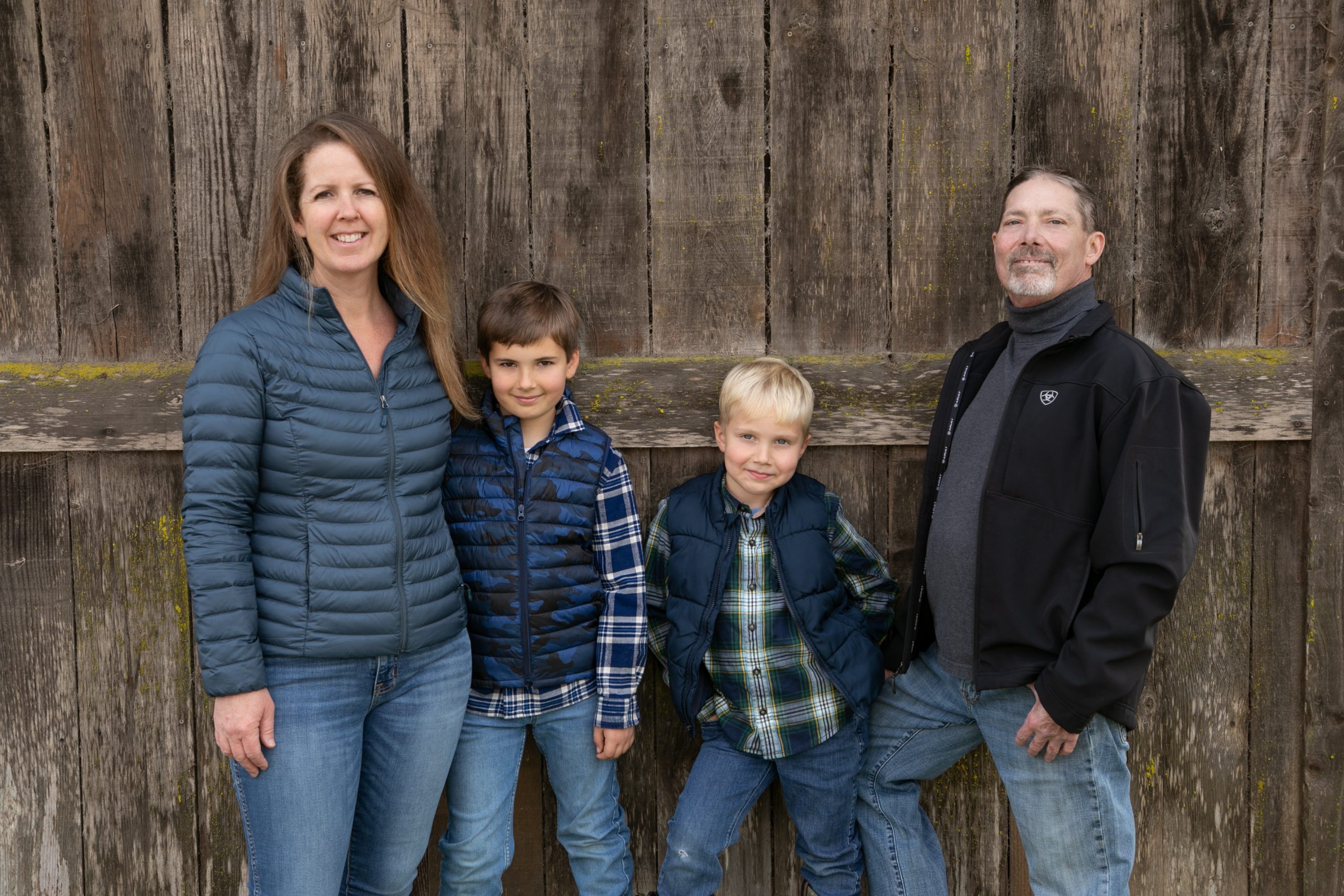
Tom with his two youngest sons and his wife, Bethany.
Tom didn’t set out to become a patient advocate—or a storyteller. But as he shares his journey from diagnosis through liver and lung transplants and recovery, it’s clear that he understands the need to spread his message both within the Alpha-1 community and beyond. His story, like that of so many other Alphas, is one of delayed answers, uphill battles, and ultimately, hope.
As a child growing up in the San Francisco Bay Area in California, Tom never experienced any serious illnesses and excelled in sports. As a young adult, he continued to keep active by playing golf, softball, and doing lots of walking during work as a Quality Assurance/Quality Control Field Oversight Inspector.
In 1997, he moved to Monterey, CA for what was supposed to be a four-month project as an inspector for the Corps of Engineers. When that project was sidelined, he was recruited for another and eventually went on to work for the US Army.
Through his career as an environmental consultant, Tom continued to stay fit by playing sports. While in Monterey, he joined a softball league, and it was during a championship game that everything changed.
“I hit the game winning home run, and it was in a place that didn’t have any fences. So I hit the ball, and I tied the game coming into second, and I realized that the left fielder missed it, so I ran to third and finally home, and I just could not breathe,” Tom recalls.
His team ultimately won the game and brought home the trophy, but Tom knew then that something was wrong. At the time, he attributed it to being overweight and being a smoker in the past. Then in 2009, when he and his family moved into a new home that sat on a slight incline, he found himself struggling to breath while walking up his driveway and committed himself to losing weight. He began walking golf courses and exercising regularly, but he found even as he lost weight, he was still having trouble breathing.
Like many Alphas, his symptoms were initially dismissed or misdiagnosed. For years, he had no idea why he was feeling increasingly tired, struggling to breathe, and facing unexplained health issues. It wasn’t until his late-30s that his doctors finally pieced together the puzzle. In 2010, he underwent a blood test for Alpha-1 and discovered that he is a ZZ Alpha.
“I was just like looking at the doctor in awe,” Tom remembers about that moment, “because I was in such good shape at that time. I was going to the gym. I was working out. I was, you know, strong, and I just couldn’t breathe.”
Despite staying active, his lungs were already deteriorating. “I believe that people die every day from undiagnosed Alpha-1 because it just looks like dying of old age,” he says. “You’re 70, your body shuts down—liver, lungs, everything—and they just say that’s what happens. But really, it’s Alpha-1 or it could be.”
Tom began undergoing weekly Alpha-1 augmentation therapy infusions shortly after his diagnosis. He began to focus even more on his health, enrolling in AlphaNet and connecting with a Coordinator, and even quitting drinking alcohol entirely. Then, in October of 2018, he experienced a seizure after his infusion session and was rushed to the hospital. He was diagnosed with liver failure and spent a month in the intensive care unit. After this initial episode, Tom was hospitalized several more times, experiencing three comas, and suffering a major back injury from being in hospital beds for so long – vertebrae from his neck to lower back broke in 11 places which caused his spine to compress by 5″ resulting in Tom’s height being reduced to from 5’9″ to 5’4”. At one point, his gallbladder failed, but as he was being prepped for emergency surgery, a donor liver became available.
On May 12, 2022, Tom underwent a liver transplant. His daughter, Brenna, dropped everything to be there for her father – even as she was dealing with a cross-country move and planning her wedding. The surgery was a success and a little over a year later, Tom was able to take his first plane since becoming ill, be there for Brenna on her wedding day, and walk her down the aisle.
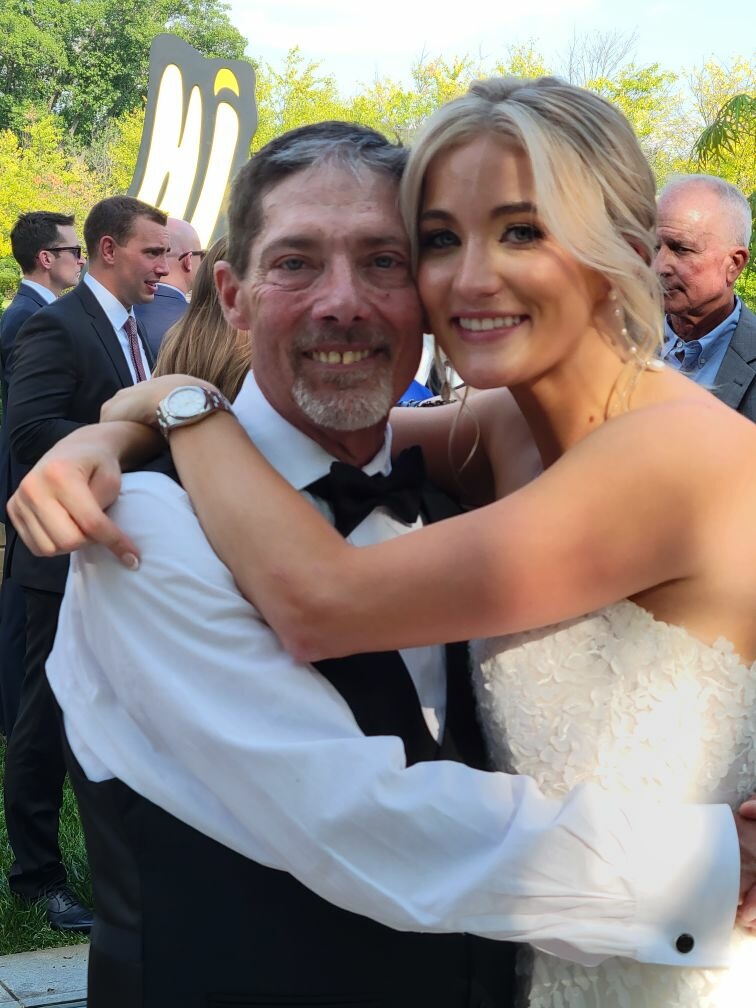
Tom with his daughter, Brenna, on her wedding day, June 24th, 2024.
But just as Tom was adjusting to life with his new liver, his lungs began to fail.
Tom didn’t give up.
He was originally part of Stanford University’s transplant program for his liver, but when he was hospitalized in 2020 during COVID, there were no beds available, and he was transferred to the Sutter program in San Francisco. Now that he knew he needed a lung transplant, he returned to Stanford, but after undergoing testing to determine his eligibility, he was ultimately deferred from their program.
Now on oxygen full time, Tom refused to let that be the final word. “They didn’t deny me, but I was on the chopping block,” he says. “My primary care physician was saying we should start applying to UCSF and UCLA. I said ‘No. This is where I want to be. I should be here at Stanford.’”
Tom wrote a letter. It was part rebuttal, part appeal, and entirely heartfelt. “I was very proud of that letter,” he remembers. “I had each of my specialists write a reference to debunk each reason I was deferred. I said, ‘I am a younger man who was hit by a hereditary condition right at the top of my life, and I’ve still got a lot to give. If I’m not the epitome of what a lung transplant candidate is, tell me who is?’” The letter worked. He was accepted.
On October 23, 2024, Tom underwent a successful double lung transplant. He spent just a few short weeks in the hospital and stayed in hotels and Airbnbs near Stanford with his cousin, Larry.
Two and a half months into his recovery period, Tom and Larry decided to go fishing near Stanford and met two women on their lunch break from the hospital.
“One commented on how jealous she was that I had the lifestyle to just be out fishing with no worries. I asked if they really wanted to know why I was out on a random weekday leisurely fishing. I told them my life story in a condensed, CliffsNotes-style. They stayed as long as they could to talk because they were amazed and wanted to ask medical questions. It was nice to talk and take on how life is so special and how lucky I was to be alive.”
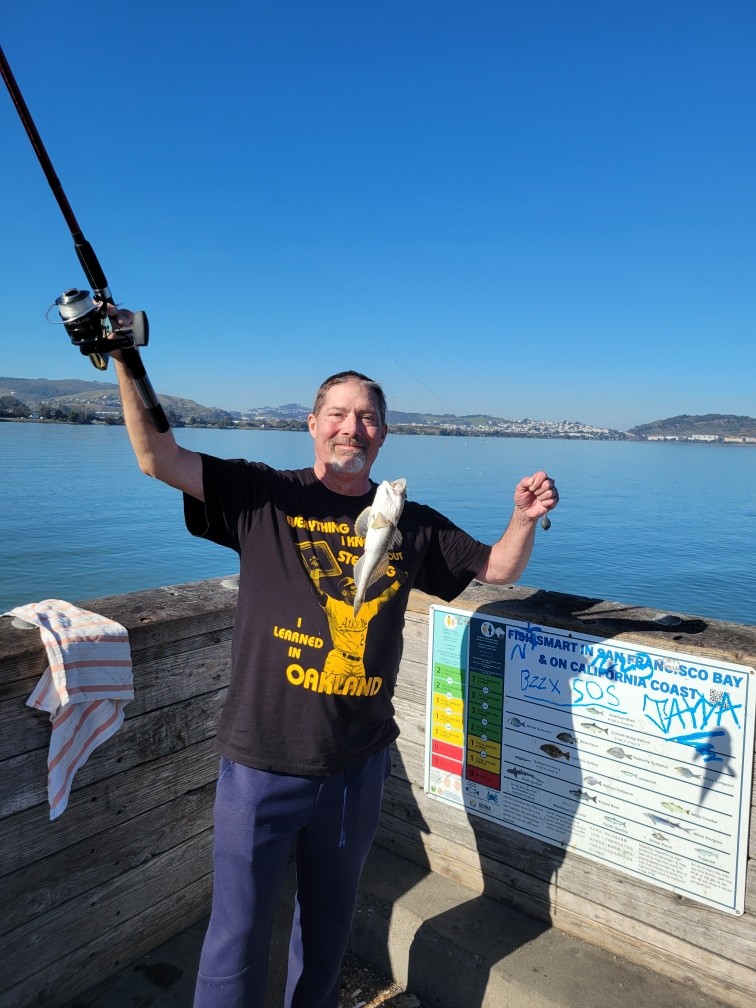
Tom with a bullhead he caught that day.
A couple of weeks later, Tom was able to return home.
Since undergoing the lung transplant, Tom has begun rebuilding not just his body but also his sense of purpose. “My body’s been beat up. It’s been through so much. But my head is strong. I’m working to get back to as close to a normal life as I can. I want to be the father, the husband, the person I’m capable of being. I want to get healthy, not just survive.”
Tom credits his amazing support network of family and friends for helping him get through his darkest moments.
“I have been so blessed to have my wife, Bethany. She’s been through so much and supported me through the direst times, as has my entire network of great family and friends. Some are like me and use some humor to get through and I appreciate it so much.”
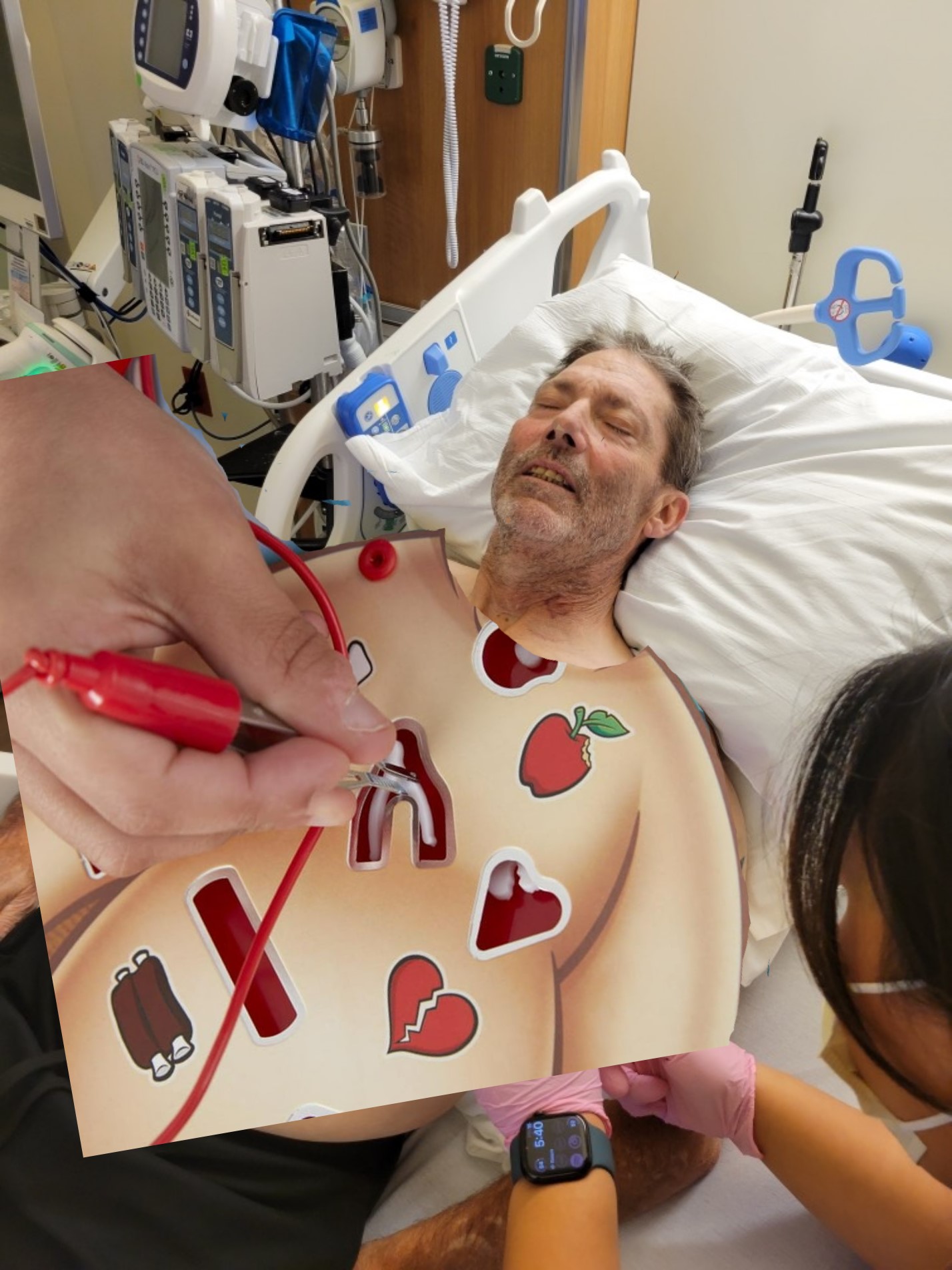
“This photo was taken during the suture removal the night I was released 30 days after my lung transplant. My cousin, Larry, asked if he could film it. I sent the full hard core surgical pictures to a big group of friends and family. This Photoshopped version was sent back in minutes after I sent it to a great friend and colleague who’s been through ALL of it with me. Right by my side for everything as much as he could help me with, including rides to the ER. He’s a colleague but really, family.” – Tom
Tom is currently enrolled in a cardiopulmonary rehab program, with his sights set on transitioning to a gym afterward. He’s also rediscovered an old passion – playing the guitar.
As someone who’s made it through the transplant journey, his advice to others is both emotional and practical. “Stay strong. It’s a marathon, not a sprint,” he says. “There were days I didn’t believe in myself, but I always reminded myself: someone out there is having a harder day than me.”
Focusing on others and maintaining a positive attitude helped Tom get through the long hospital stays before and after his transplants.
“I used to tell every doctor and nurse, ‘My goal is to be your favorite patient of the day.’ That was my attitude. I got a lot of love in hospitals by just being a nice person.”
And now, that energy is being directed toward the next phase of Tom’s life—advocacy, mentorship, and possibly, leadership. Since his transplants, he’s been a part of AlphaNet’s REACH program for Alphas not on augmentation therapy, and he knows programs like this and Coordinators like REACH’s Siobhan Lestina, can make all the difference for those who need answers about their health – and want to talk to another Alpha with extensive experience managing their own Alpha-1 health.
“I want to be able to help someone else through their worst days,” he says. “If I can show one person what it’s like to come out on the other side, that’s worth it.”
Looking ahead, Tom is especially passionate about new Alpha-1 research, family testing, and early intervention, something he wishes had been possible for him. He’s encouraged by AlphaNet and the Alpha-1 Foundation’s upcoming focus on family testing and liver health.
“That’s where it all starts. If the liver fails, you’re done,” he says plainly. “Getting people tested earlier could save lives.”
After everything, Tom says the desire to live has always been there—even in the darkest moments. He encourages others to not give up, if they want to reclaim their lives. “You’ve gotta want that fight,” he says. “No one can do that for you.”
“It has to be inside you. That’s what kept me going.”
